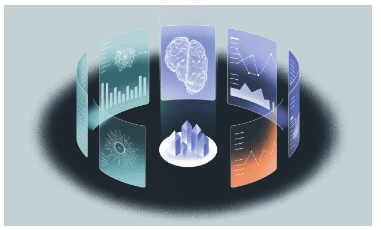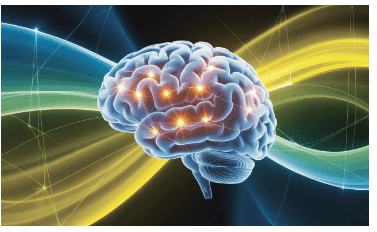Explaining and Classifying Psychological Disorders Chapter Notes | AP Psychology - Grade 11 PDF Download
Introduction
Psychological disorders are complex conditions impacting thoughts, emotions, and behaviors. They are identified through dysfunction, distress, and deviation from social norms, and classified using systems like the DSM and ICD. Various perspectives—behavioral, cognitive, biological, and others—offer insights into causes and treatments, while the biopsychosocial and diathesis-stress models integrate these factors. This chapter explores how disorders are identified, diagnosed, and understood, including the benefits and challenges of classification.
Identifying Psychological Disorders

Psychologists evaluate several criteria to diagnose a psychological disorder, distinguishing normal behavior from potential mental health issues.
- Dysfunction: When thoughts, emotions, or behaviors disrupt daily activities, such as maintaining relationships, working, or self-care.
- Distress: Experiencing intense sadness, anxiety, or emotional suffering that impacts well-being, though some disorders may distress others more than the individual.
- Deviation from Social Norms: Behaviors significantly different from cultural norms, like erratic emotional responses or challenges with social cues.
Mental health is a spectrum, and no single criterion defines a disorder. Psychologists assess a combination of these factors for accurate diagnosis.
Impact of Diagnosing Psychological Disorders
Diagnosing psychological disorders has both advantages and drawbacks, influenced by the disorder, the individual, and societal context.
Benefits of Diagnosis:
- Enables individuals to understand their condition and pursue suitable treatment.
- Guides mental health professionals in creating effective treatment plans.
- Facilitates access to support groups, therapy, and medical resources.
- Reduces self-blame by framing the condition as a medical or psychological issue, not a personal flaw.
Challenges of Diagnosis:
- May lead to stigma, causing individuals to feel labeled or judged.
- Can perpetuate discrimination based on race, gender, age, or socioeconomic status.
- Some cultures may not acknowledge certain disorders or view mental health differently, affecting treatment acceptance.
- Diagnosis might restrict opportunities in employment, education, or social relationships due to negative perceptions.
Diagnosing Psychological Disorders

Identifying psychological disorders requires expert training and tools that are based on scientific research. Mental health professionals use classification systems to make sure diagnoses are accurate and reliable.
There are two main systems used around the world, and they are regularly updated as new research becomes available. These systems help ensure that diagnoses are based on facts rather than personal beliefs or cultural influences. Accurate diagnoses help people get the right treatment and support for their mental health.
DSM (Diagnostic and Statistical Manual):
- Created by the American Psychiatric Association
- Main diagnostic system used in the U.S.
- Regularly updated with the latest research
ICD (International Classification of Diseases):
- Developed by the World Health Organization (WHO)
- Used globally
- Offers a consistent set of diagnostic guidelines
Psychological Perspectives on Disorders

Various perspectives offer distinct explanations for mental disorders, contributing to a holistic understanding.
Eclectic Perspective
Most psychologists adopt an eclectic approach, integrating various psychological perspectives to diagnose and treat clients effectively. Rather than depending on a single theory or method, they blend different approaches to meet each person’s unique needs.
This approach enables psychologists to:
- Account for biological factors, such as brain function and genetics, in understanding mental health issues.
- Apply cognitive and behavioral strategies to help clients modify negative thought patterns and behaviors.
- Investigate emotional and unconscious factors, as explored in psychodynamic therapy.
- Consider social and cultural influences, acknowledging the role of relationships and societal expectations in mental health.
Behavioral Perspective
Mental disorders can arise from learned associations between experiences and responses. When someone consistently links a situation with stress or fear, they might develop unhealthy behaviors in response.
- Learned behaviors, like avoidance or poor coping strategies, can contribute to mental disorders.
- Conditioning, both classical and operant, influences behavior development.
- Therapy often emphasizes relearning healthier responses through reinforcement and behavioral techniques.
Psychodynamic Perspective
Unconscious thoughts and early life experiences play a key role in mental health. Many emotional struggles may stem from unresolved conflicts or suppressed feelings buried in the subconscious.
- Childhood experiences can shape adult emotions and behaviors.
- Hidden fears, desires, or traumas may lead to psychological distress.
- Therapy aims to uncover these underlying influences and bring them into conscious awareness.
Humanistic Perspective
Mental disorders may emerge when individuals feel disconnected, unsupported, or unable to achieve their full potential. A lack of personal growth and social support can contribute to distress.
- Feeling unfulfilled or purposeless can lead to emotional struggles.
- Strong relationships and a sense of belonging support mental well-being.
- Therapy focuses on fostering self-acceptance, personal growth, and meaningful connections.
Cognitive Perspective
People’s thoughts shape their emotions and actions. Negative thinking patterns, irrational beliefs, and distorted views can contribute to mental health issues.
- Ongoing negative thoughts may heighten stress, anxiety, and depression.
- Cognitive distortions, like overgeneralization or catastrophizing, can influence feelings.
- Therapy aids in identifying and modifying unhelpful thought patterns.
Evolutionary Perspective
Certain mental processes and behaviors that once aided survival may now contribute to psychological disorders. Traits that were adaptive for early humans might create challenges in modern contexts.
- Fear and anxiety, once protective, can now lead to excessive stress.
- Social behaviors that supported group survival may underlie issues like social anxiety.
- Recognizing these origins can help manage and adjust responses.
Sociocultural Perspective
Mental health is influenced by social and cultural contexts. Relationships, societal expectations, and community pressures shape how individuals experience and express psychological distress.
- Factors like discrimination, poverty, and cultural norms can affect well-being.
- Social roles and expectations may increase stress and anxiety.
- Therapy often focuses on navigating external influences and developing coping mechanisms.
Biological Perspective
Mental disorders may stem from physiological or genetic factors. Brain activity, neurotransmitter levels, and hereditary traits significantly impact mental health.
- Imbalances in brain chemistry can lead to changes in mood and behavior.
- Genetic predispositions may elevate the risk of certain disorders.
- Treatments like medication, combined with therapy, can help restore balance.
Interaction Models of Psychological Disorders
Disorders typically result from a combination of factors. Interaction models explain how biological, psychological, and environmental elements interact.
Biopsychosocial Model of Disorders
The biopsychosocial model posits that mental disorders arise from the interplay of biological, psychological, and social factors, with no single factor solely responsible. These elements interact to shape an individual’s mental health.
- Biological factors: Genetics, brain chemistry, and physical health conditions.
- Psychological factors: Thoughts, emotions, behaviors, coping mechanisms, and patterns.
- Social factors: Relationships, cultural norms, environmental conditions, and life circumstances.
This model’s comprehensive approach leads to treatments combining medical interventions, psychological therapy, and social support, such as medication, counseling, and lifestyle adjustments, to enhance mental well-being.
Diathesis-Stress Model
The diathesis-stress model suggests that mental disorders develop when a genetic or biological predisposition (diathesis) is triggered by stressful life events.
- Diathesis: Inherent traits or genetic vulnerabilities to a disorder.
- Stress: Difficult experiences, such as trauma, loss, or chronic challenges.
For instance, an individual with a genetic predisposition to depression may remain symptom-free until a stressful event, like losing a job or experiencing a significant life change, activates the disorder. This model emphasizes the interaction of genetics and environmental stressors in mental health outcomes.
|
35 docs
|
FAQs on Explaining and Classifying Psychological Disorders Chapter Notes - AP Psychology - Grade 11
| 1. What are the common methods used to identify psychological disorders? |  |
| 2. How does the diagnosis of a psychological disorder impact an individual? |  |
| 3. What are the main psychological perspectives on disorders? |  |
| 4. What is the role of positive psychology in understanding psychological disorders? |  |
| 5. How do interaction models help in the understanding of psychological disorders? |  |















